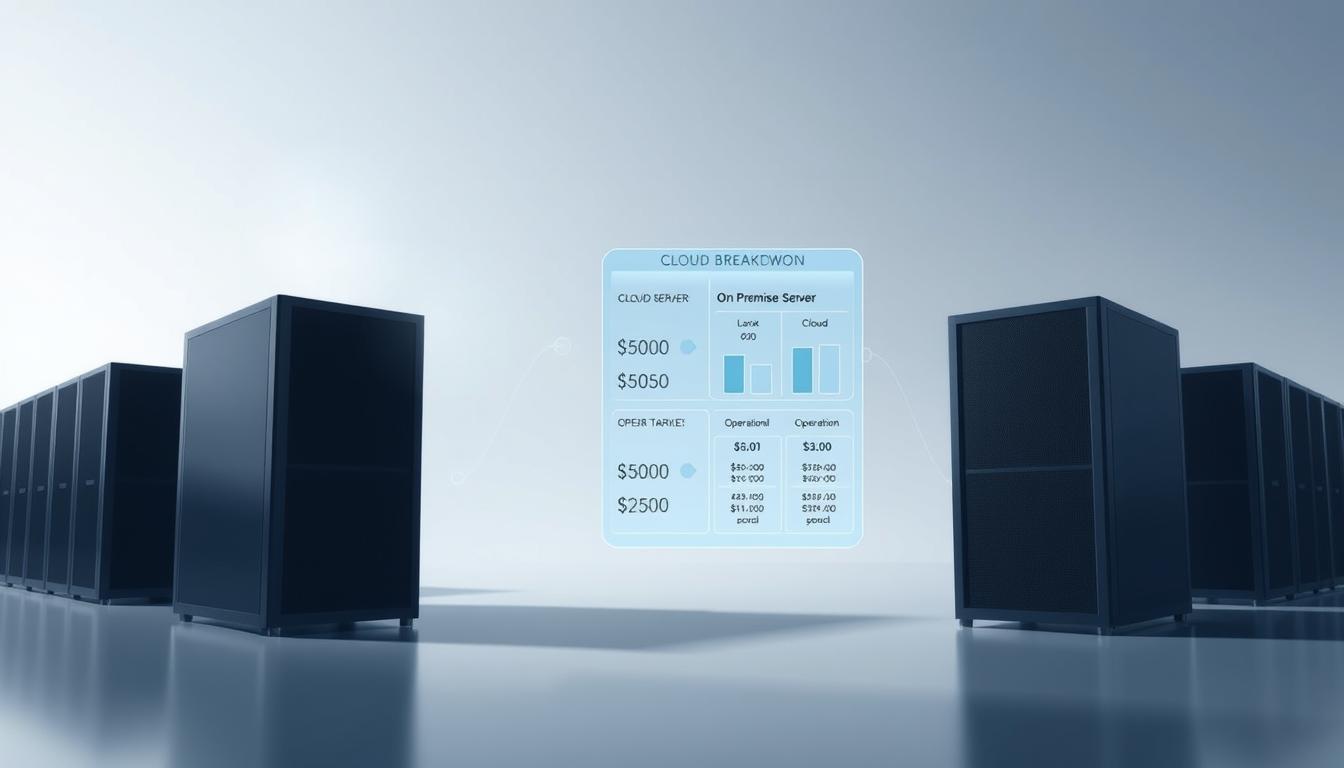In the realm of IT infrastructure, the dichotomy between cloud servers and on-premise servers necessitates a meticulous examination of cost implications. This evaluation transcends mere initial expenditures, encompassing the broader spectrum of operational expenses, scalability, and efficiency. The financial repercussions of your IT infrastructure choices are paramount to the success of your enterprise.
As you navigate this critical decision, it is imperative to assess the fiscal impact of each option. A comprehensive cost comparison will illuminate which solution best aligns with your business’s fiscal objectives and operational requirements. By dissecting the financial aspects of cloud servers and on-premise servers, you can forge a path that fosters your business’s growth and operational efficacy.
Understanding Cloud Server Costs
In the realm of cloud server expenditures, a nuanced comprehension of the diverse expense categories is paramount. The initial phase encompasses migration costs, setup fees, and the acquisition of hardware or software compatible with the cloud environment. These foundational expenses can profoundly influence your total cloud server expenditures.
Post-establishment, the focus shifts to subscription fees and usage costs, which are predicated on the consumption of resources such as storage, computing power, and bandwidth. Subscription fees fluctuate according to the cloud provider and the service tier necessitated. Accurate budgeting for your cloud infrastructure mandates a thorough grasp of these financial elements.
Several critical considerations emerge when assessing cloud server costs:
- Initial setup expenses, such as migration and setup fees
- Subscription fees and usage costs, based on resources used
- Hidden costs, such as data transfer fees and support costs

To circumvent unforeseen expenses, it is imperative to account for hidden costs, including data transfer fees, support costs, and potential expenditures related to downtime or security breaches. A comprehensive understanding of these costs empowers you to make strategic decisions regarding your cloud infrastructure, thereby optimizing value for your financial investment.
Assessing On-Premise Server Costs
In the realm of on-premise server costs, a comprehensive evaluation of expenses is paramount. The necessity for equipment and hardware, encompassing servers, storage systems, and networking apparatus, incurs significant initial equipment investments. These expenditures, while substantial, must be meticulously integrated into your financial planning.
Moreover, the perpetual maintenance expenses cannot be overlooked. This encompasses the costs of IT personnel, software updates, and the eventual replacement or repair of hardware. Such expenses escalate rapidly, necessitating a robust strategy for server upkeep and maintenance.
The factor of energy consumption also merits consideration. On-premise servers necessitate considerable power, thereby elevating energy expenditures. Additionally, the physical space required for server housing, including cooling systems and security measures, incurs additional costs. These expenses can significantly impact your business’s budget and operational efficiency.
To gain a clearer understanding of the costs, let’s dissect the primary expenses:
- Equipment and hardware investments
- Maintenance and operation expenses
- Energy consumption and space requirements
Through a meticulous assessment of these costs, you can make an informed decision regarding the suitability of on-premise servers for your enterprise. It is crucial to consider the long-term implications, including scalability and growth potential.
Long-Term Financial Implications
In the context of server selection, a thorough examination of long-term financial implications is paramount. The total cost of ownership (TCO) serves as a pivotal metric, encapsulating both direct and indirect expenses inherent in server maintenance over its operational life span. Scalability emerges as a critical factor, enabling businesses to dynamically adjust their server capacity in response to evolving needs, thereby influencing long-term financial outlays.
Several elements must be scrutinized when assessing long-term financial burdens:
- Initial setup expenses
- Ongoing maintenance and operation expenses
- Energy consumption and space requirements
- Potential for cost predictability and budgeting

Cloud servers present a more stable cost profile compared to the fluctuating expenses of on-premise servers, facilitating more accurate budgeting and future planning. A comprehensive evaluation of both options’ long-term costs and scalability enables businesses to make strategic decisions that align with their financial objectives. This approach not only minimizes total cost of ownership but also enhances overall cost predictability.
Comparing Cost Efficiency Over Time
In the realm of server solutions, the long-term implications of your choice are paramount. The distinct requirements of various business models necessitate a server that aligns with your investment goals, thereby influencing your return on investment (ROI). A comprehensive analysis of the total cost of ownership is imperative, encompassing initial setup costs, recurring subscription fees, and maintenance expenses.
Cloud servers, renowned for their flexibility and scalability, often emerge as the more cost-efficient option. They allow for seamless adjustments to resource allocation, thereby minimizing waste and optimizing expenditure. Conversely, on-premise servers demand a substantial initial investment in hardware and equipment, posing a significant hurdle for smaller enterprises.
An in-depth ROI comparison is indispensable in identifying the server solution most conducive to your business’s fiscal health. Considerations must extend to cost predictability, budgeting, and the potential for scalability and expansion. Insights gleaned from case studies of enterprises that have adeptly managed their costs through strategic server selection can be invaluable.
When scrutinizing business models and server options, several critical factors come into play:
- Initial setup expenses and subscription fees
- Maintenance and operation costs
- Energy consumption and space requirements
- Scalability and growth potential
By meticulously assessing these elements and aligning them with your business’s specific needs, you can make an informed choice. This decision will enable you to achieve optimal cost efficiency over the long term.
Conclusion: Making an Informed Decision
The dichotomy between cloud servers and on-premise servers necessitates a meticulous examination of diverse cost elements. It is imperative to assess your enterprise’s requirements, financial limitations, and future expansion prospects. By dissecting the essential insights and employing cost comparison tools, you can make a decision that resonates with your company’s strategic objectives.
It is plausible that a hybrid strategy, amalgamating the advantages of both cloud and on-premise solutions, may be the optimal route. The selection of your server infrastructure’s future direction is critical. It must ensure a seamless transition and enhance the cost-effectiveness of your server setup.
Seeking counsel from industry specialists, examining case studies, and conducting a detailed cost analysis are indispensable steps. These actions will enable you to identify the most appropriate solution for your business. Armed with the correct data and a strategic perspective, you can refine your server infrastructure, thereby propelling your organization’s growth and profitability.
